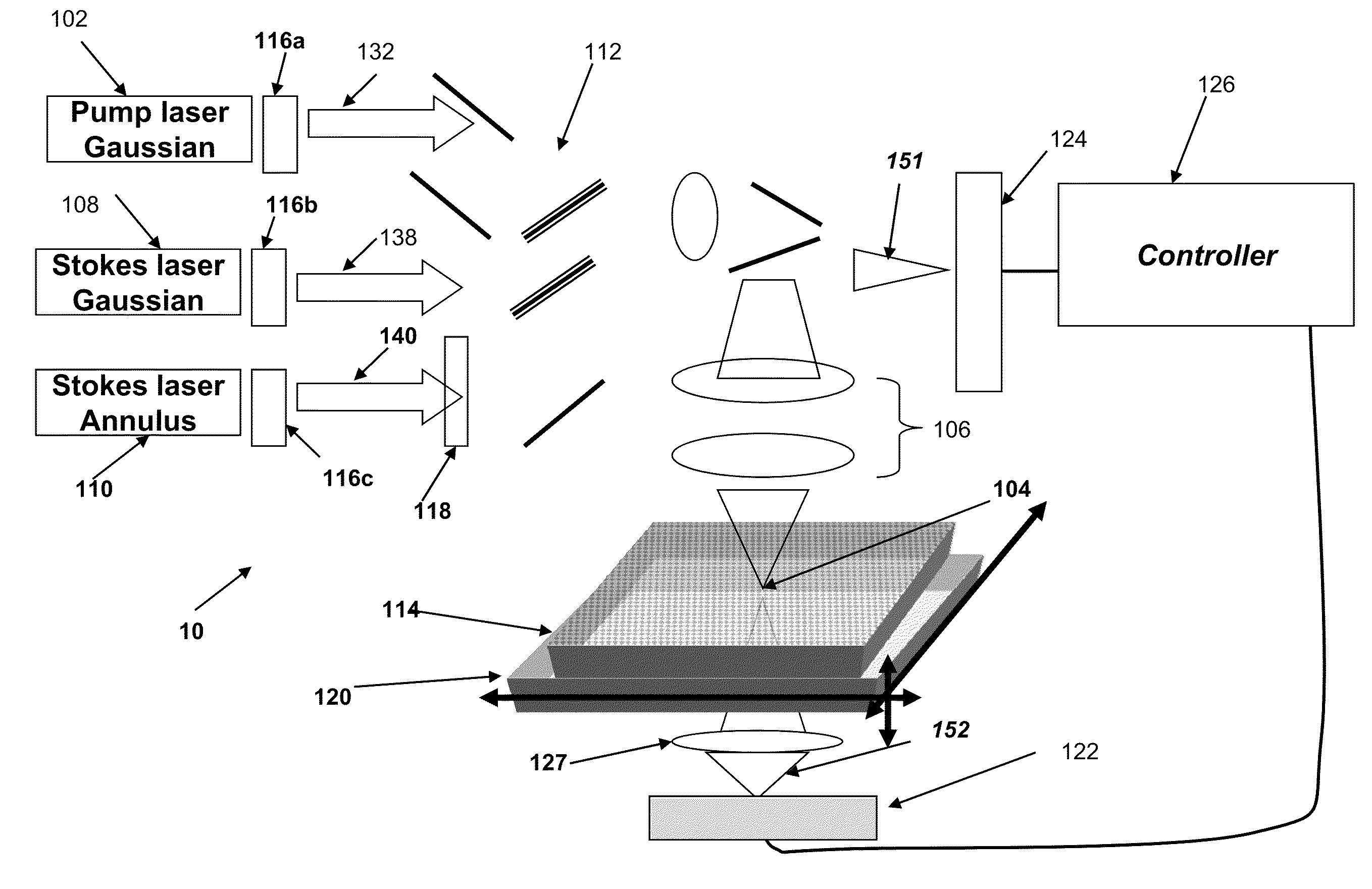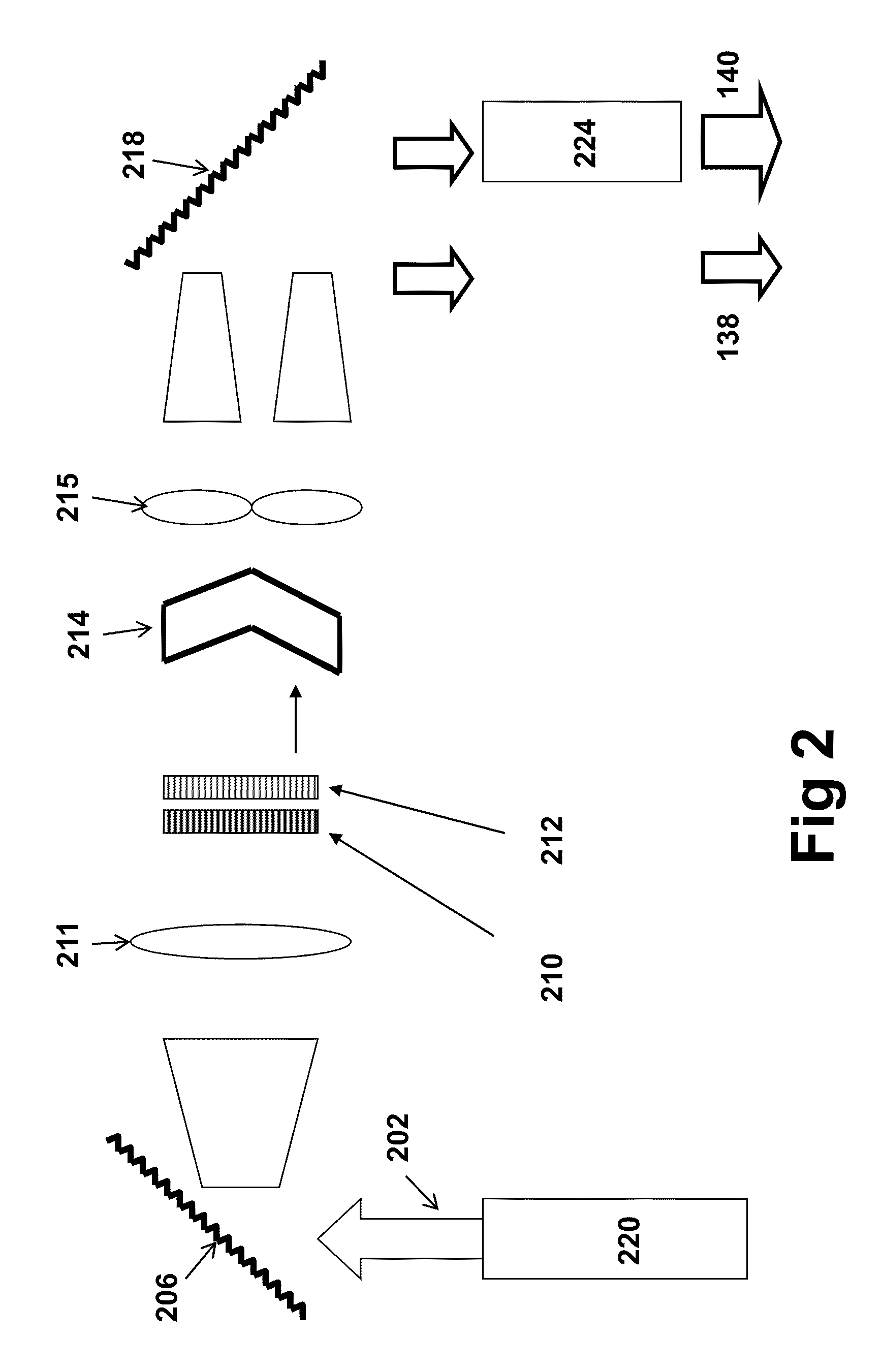Method and system for stimulated Raman microscopy beyond the diffraction limit
a raman and microscopy technology, applied in the field of raman and fluorescence microscopy, can solve the problems of limited application of raman process in biological imaging and hyper-resolution, inability to identify intrinsic molecules that are not strongly fluorescent, and inability to identify intrinsic molecules
- Summary
- Abstract
- Description
- Claims
- Application Information
AI Technical Summary
Benefits of technology
Problems solved by technology
Method used
Image
Examples
Embodiment Construction
[0029]Referring now to FIG. 1, a microscopy system 10 focuses a pump beam 132 from a pump laser 102 emitting laser pulses with a Gaussian beam profile and picosecond duration in a diffraction limited spot 104 in the focal plane of a high numerical aperture (NA) microscope objective 106. A sample 114 to be investigated is located in or near the focal plane. The laser pulse 132 is used to pump the excited state that will emit stimulated emission. Picosecond laser pulses 138, 140 from two additional lasers 108, 110 that are at Stokes-shifted from the wavelength of the pump laser 102 are also focused at the diffraction limited spot 104. The pulses 138 and 140 from these lasers are referred to as “Stokes” pulses and are used to excite stimulated emission from the excited states of the sample. The energy differences between the pump and the Stokes pulses are within the stimulated emission bandwidth of the sample under study. The picosecond laser pulses 138 and 140 are either emitted so as...
PUM
 Login to View More
Login to View More Abstract
Description
Claims
Application Information
 Login to View More
Login to View More - R&D
- Intellectual Property
- Life Sciences
- Materials
- Tech Scout
- Unparalleled Data Quality
- Higher Quality Content
- 60% Fewer Hallucinations
Browse by: Latest US Patents, China's latest patents, Technical Efficacy Thesaurus, Application Domain, Technology Topic, Popular Technical Reports.
© 2025 PatSnap. All rights reserved.Legal|Privacy policy|Modern Slavery Act Transparency Statement|Sitemap|About US| Contact US: help@patsnap.com



